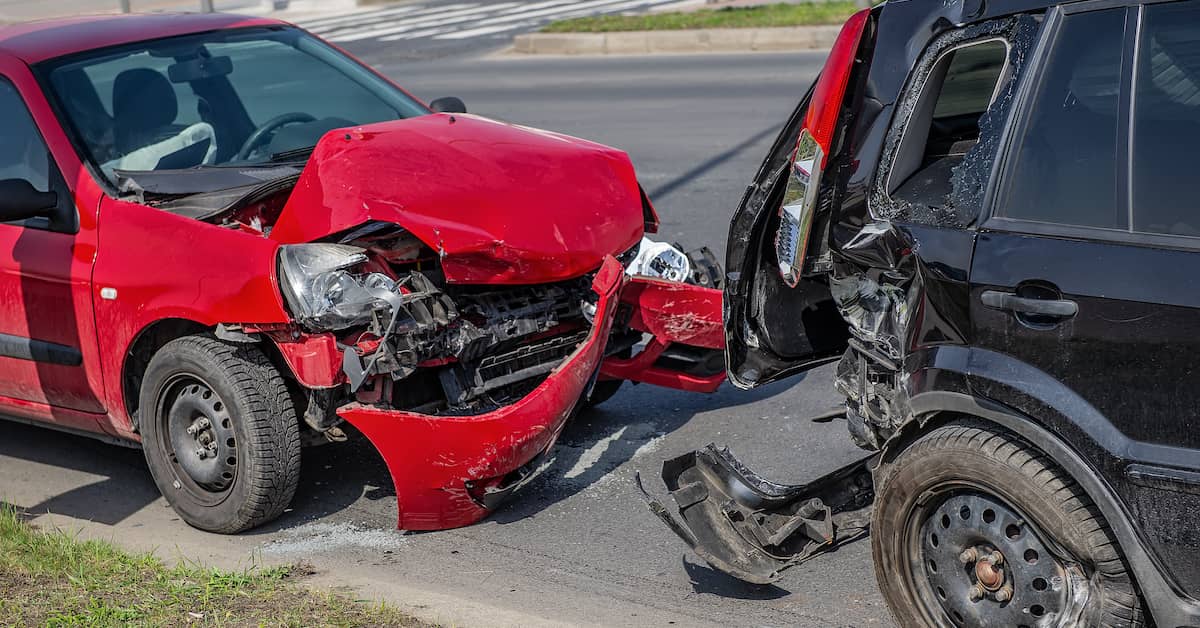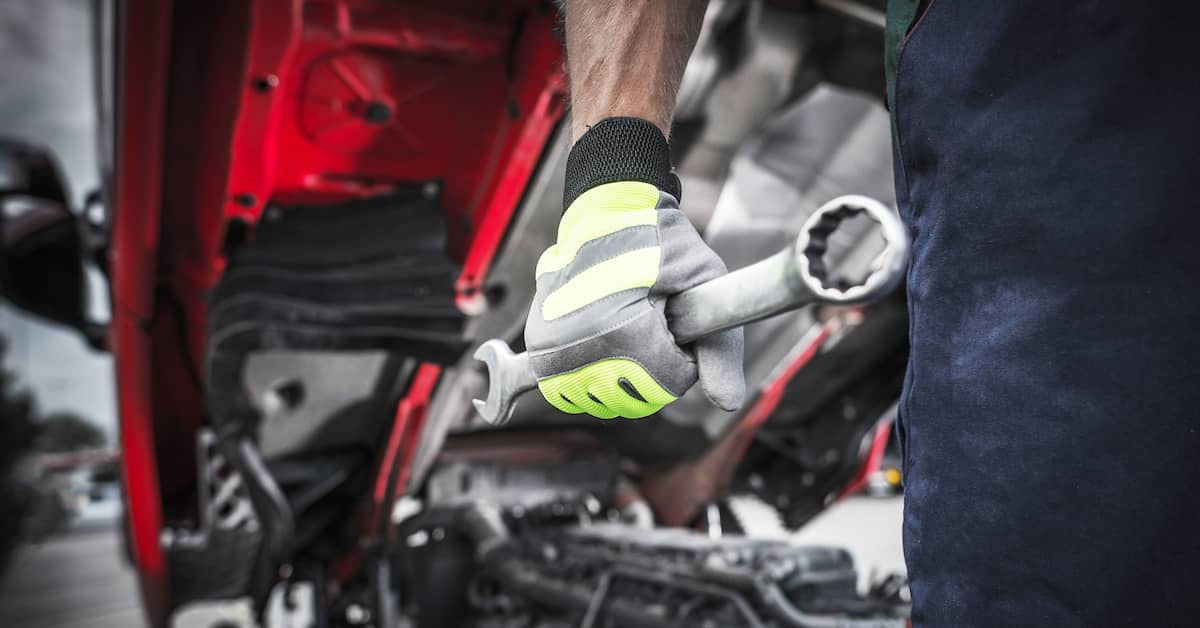
Someone Hit My Car from Behind: Who’s At Fault When Rear-Ended?
In the blink of an eye, a routine drive can turn into a stressful ordeal if you find yourself in a rear-ended accident. This common type of collision often raises immediate questions about fault and next steps. Understanding the dynamics of a rear-ended accident is essential, especially in New Jersey, where roadways bustle with diverse traffic.
Finding yourself the victim in a rear-ended accident can be painful and disorienting. Engaging with a New Jersey car accident lawyer can be pivotal in navigating the aftermath of such an incident. The attorneys at Maggiano, DiGirolamo & Lizzi can help to ensure your rights are protected and you pursue the compensation you’re entitled to.
Call (201) 585-9111 today to schedule a FREE case evaluation. We find ourselves constantly inspired by the resilience of our clients, and we fight courageously to bring them justice for their losses.
What Does Rear-Ended Mean In A Crash?
A rear-ended accident occurs when one vehicle strikes the back of another. Often associated with sudden stops or reduced traffic speeds, these accidents can range from minor fender benders to severe crashes. Despite the circumstances, the impact can significantly affect all parties involved, both physically and financially.
What Is The Rear-End Law In New Jersey?
N.J.S.A. § 39:4-89 mandates a clear guideline regarding the safe following distances on the road. This legislation specifically stipulates that drivers must not trail the vehicle ahead more closely than what is considered reasonable and prudent. This consideration takes into account the leading vehicle’s speed, the overall traffic flow, and the state of the roadway.
A crucial element of this law is its directive that drivers maintain a minimum gap equivalent to the length of one vehicle, effectively placing the onus of preventing rear-end collisions primarily on the trailing driver. In a rear-ended accident, fault is predominantly attributed to the following driver for not maintaining an adequate buffer. This is rooted in the presumption that they have breached their legal duty to follow at a safe distance. Nonetheless, there are instances where the actions of the leading driver may also be scrutinized for potential contributory negligence.
Whose Fault Is It When Hit From Behind In A Car?
Determining fault in a rear-ended accident hinges on evidence that illustrates negligent behavior. Commonly, the driver who hits another vehicle from behind is found at fault for failing to maintain a safe following distance (tailgating) or not paying attention.
However, New Jersey operates under a comparative negligence system (§ 2A:15-5.1), which means that fault in a rear-ended accident isn’t automatically assigned to the trailing driver. Circumstances exist where the leading driver could share liability, such as abruptly stopping without cause, erratic driving, having non-functioning brake lights, or other negligent actions.
Establishing Fault
Establishing fault in a rear-ended accident involves a systematic approach to gathering and analyzing evidence that indicates which party’s actions or inactions contributed to the collision. Here are the steps involved in establishing fault:
Accident Scene Analysis
The immediate aftermath of the accident provides critical clues. Observing the positions of the vehicles, skid marks, and damage can offer insights into how the accident occurred.
Witness Statements
Eyewitnesses can provide objective accounts of the events leading up to the accident, which can be important in piecing together the sequence of events.
Review of Traffic Camera or Dashcam Footage
If available, footage from traffic cameras or dashcams can provide incontrovertible evidence of the circumstances leading to the accident.
Police Reports
Officers responding to the scene compile accident reports that often include their assessment of fault based on preliminary evidence and observations.
Vehicle Damage Assessment
The extent and location of damage on both vehicles can indicate the point of impact and the dynamics of the crash, further elucidating how the accident happened.
Analysis of Driving Behavior
Evaluating whether any of the drivers violated traffic laws leading up to the accident (e.g., speeding, erratic driving, failure to signal) can help determine fault.
Expert Reconstruction
In complex cases, accident reconstruction experts may be employed to simulate the accident based on the available data, offering a detailed analysis of fault.
Review of Medical Reports
Injuries sustained by the occupants can sometimes indicate the severity and mechanics of the crash, providing indirect evidence of how the collision unfolded.
Consideration of Environmental & Road Conditions
Factors such as weather, visibility, and road quality at the time of the accident are assessed to understand if and how they contributed to the incident.
Legal Interpretation of Evidence
Finally, the collected evidence is interpreted within the framework of local traffic laws to make a determination of fault, which will guide the compensation process.
Each step involves careful collection and analysis of information to build a comprehensive picture of the incident, ultimately determining responsibility for the accident. Engaging a skilled New Jersey car accident lawyer early on ensures thorough evidence collection and effective representation.
What Happens To Your Body After Being in a Rear-Ended Accident?
Being rear-ended can lead to a variety of injuries, ranging from mild to severe, depending on the force of impact, the speed of the vehicles involved, and the position of the occupants at the time of the collision. The sudden jolt can cause the body to move in unnatural ways, leading to injuries such as:
- Whiplash: The most common injury in rear-end accidents, where the sudden movement causes the neck to snap back and forth, leading to muscle and ligament strain.
- Concussions: The brain can hit the inside of the skull due to the sudden stop, causing a concussion or other traumatic brain injuries.
- Back Injuries: The force can cause strain or sprain in the lower back or, in more severe cases, herniated discs.
- Spinal Cord Injuries: Extreme impacts can damage the spine, potentially leading to partial or complete paralysis.
- Broken Bones: The force can lead to fractures, especially in the arms, legs, or ribcage, from bracing against the impact.
- Soft Tissue Injuries: Muscles, tendons, and ligaments throughout the body can be stretched or torn.
- Internal Injuries: Organs can be damaged by the force of the seatbelt or steering wheel, leading to internal bleeding.
- Emotional Trauma: Psychological effects such as anxiety, PTSD, or depression may follow after a traumatic accident.
The sudden and forceful nature of rear-end accidents means that the body hardly has time to brace for impact, leading to a range of possible injuries, some of which may not be immediately apparent. It’s crucial to seek medical attention right after an accident, even if you feel fine, as some injuries might only manifest symptoms days or weeks later.
What To Do After A Rear-Ended Accident In New Jersey
Following a rear-ended accident, it’s vital to:
- Ensure the safety of all parties and call emergency services.
- Exchange information with the other driver but avoid admitting fault.
- Document the scene and injuries with photos.
- Seek medical evaluation.
- Report the accident to your insurance.
- Consult with a New Jersey car accident lawyer to discuss your case.
How Can A Rear-Ended Accident Attorney Help Me?
A rear-ended accident attorney can be instrumental in handling the complexities of your case. They can manage negotiations with insurance companies, compile and present evidence to establish fault, advocate for your best interests, and strive to secure maximum compensation for your injuries and losses. With their assistance, you can confidently navigate the legal process, focusing on your recovery while they champion your cause.
Contact Maggiano, DiGirolamo & Lizzi Today!
If you’ve been involved in a rear-ended accident, you need a team that stands by your side. Maggiano, DiGirolamo & Lizzi understand the intricacies of New Jersey car accident claims and are ready to help.
Don’t let the stress of an accident overwhelm you—contact us for a FREE consultation today. Together, we’ll work towards securing the compensation you need to move forward. We proudly serve clients in Fort Lee and throughout New Jersey and New York.

















